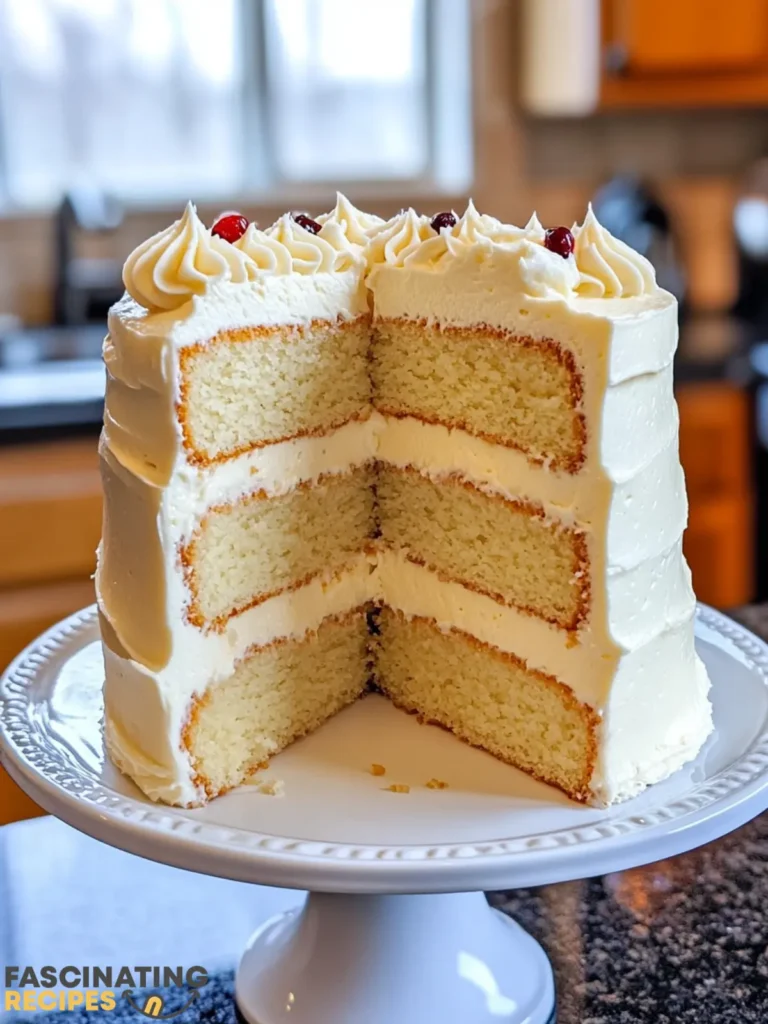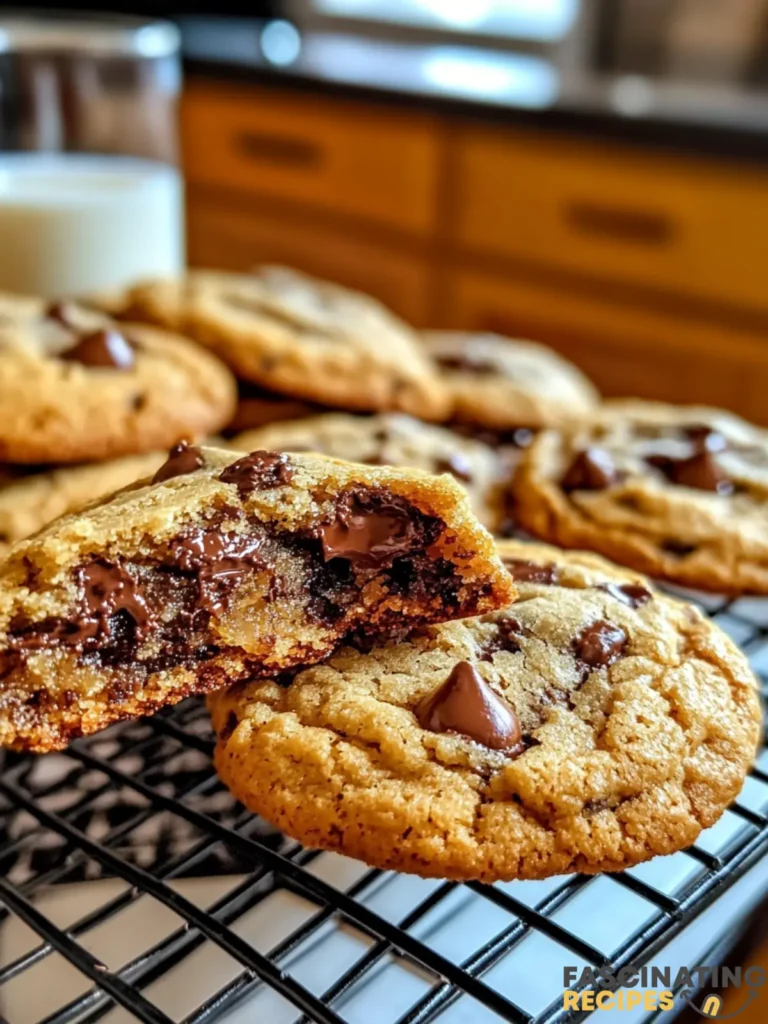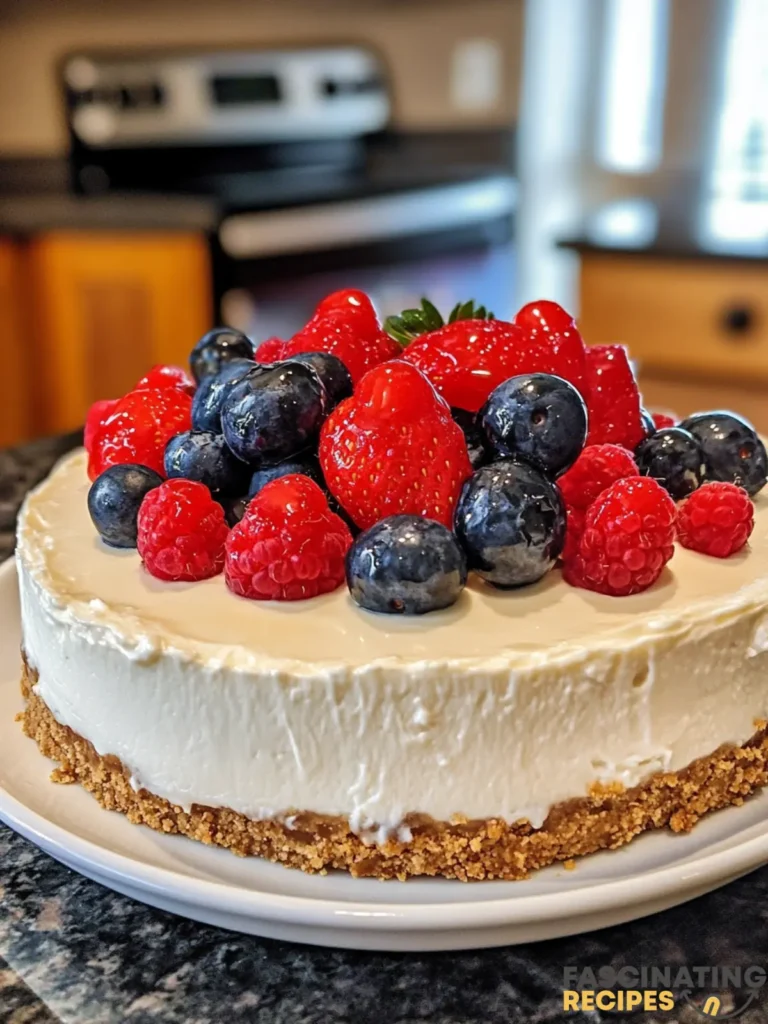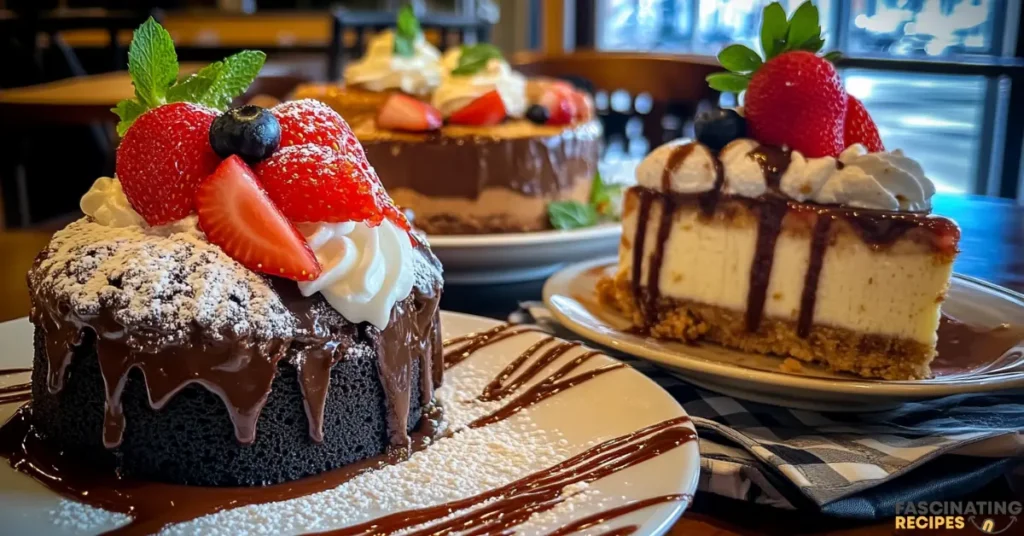The perfect dessert recipe transforms an ordinary meal into a memorable occasion. Whether you’re seeking sophisticated cakes for celebrations, convenient cookies for lunchboxes, or simple no-bake desserts for summer evenings, this guide offers something for every sweet tooth. These carefully selected dessert recipes balance indulgence with accessibility, ensuring delicious results regardless of your baking experience.
Table of Contents
Essential Techniques for Exceptional Dessert Recipes
Creating outstanding dessert recipes requires understanding fundamental techniques that elevate even the simplest creations. Mastering these foundational skills ensures consistent results while providing the confidence to experiment with more complex dessert recipes.
Precision in Measurement and Timing
Unlike savory cooking, dessert recipes require exactitude. Measuring ingredients precisely—particularly flour, leavening agents, and sugar—significantly impacts the final texture and structure. Use measuring cups designed specifically for dry ingredients, leveling each measure with a straight edge. For liquids, view measuring cups at eye level on a flat surface to ensure accuracy.
Timing represents another critical element in successful dessert recipes. Under-mixing batters can leave ingredients incompletely incorporated, while over-mixing develops excessive gluten, resulting in tough baked goods. Similarly, baking times serve as guidelines rather than absolutes—visual and tactile cues often provide more reliable indicators of doneness.
Cakes & Pastries: Showstopping Dessert Centerpieces
Cakes and pastries often serve as the visual and gustatory focal points of special occasions. These dessert recipes combine artistry with precision baking techniques to create memorable finales to important meals.
Classic Vanilla Layer Cake with Versatile Buttercream

This foundational dessert recipe creates a tender, versatile cake suitable for birthdays, anniversaries, and other celebrations. The straightforward preparation yields consistent results while accommodating various flavor adaptations.
Begin by creaming room-temperature butter with granulated sugar until light and fluffy. Gradually add room-temperature eggs, allowing each to incorporate fully before adding the next. Alternate additions of dry ingredients (flour, baking powder, salt) with milk, beginning and ending with the dry mixture. Divide the batter between prepared cake pans and bake until a tester inserted in the center emerges clean. Cool completely before frosting with classic buttercream.
French Apple Tart with Flaky Pastry
This elegant dessert recipe showcases simple ingredients through precise technique, resulting in a sophisticated pastry appropriate for dinner parties and special occasions. The combination of buttery pastry with caramelized fruit epitomizes refined French pastry traditions.
Create a basic pâte brisée by pulsing flour, salt, and cold butter in a food processor until the mixture resembles coarse meal. Add ice water just until the dough coheres, then chill thoroughly. For the filling, arrange thinly sliced apples in an overlapping pattern over the rolled pastry, leaving a border for folding. Brush the fruit with melted butter and sprinkle with sugar before baking until the pastry becomes golden and the apples caramelize.
Cookies & Bars: Versatile Dessert Recipes for Every Occasion
Cookies and bars represent some of the most adaptable dessert recipes, scaling easily for both intimate gatherings and large events. Their portability and extended freshness make them ideal for gifting, lunchboxes, and advance preparation.
Perfect Chocolate Chip Cookies with Textural Contrast

This quintessential American dessert recipe creates cookies with the ideal balance of crisp edges and chewy centers. Understanding the techniques behind this classic enables you to customize according to texture preferences.
Begin by creaming butter with both granulated and brown sugars until light and fluffy. The proportion of brown sugar significantly impacts chewiness through its moisture-retaining properties. Add room-temperature eggs and vanilla, then incorporate dry ingredients without overmixing. Fold in chocolate chips and optional nuts before chilling the dough—a crucial step that prevents excessive spreading during baking. Bake until the edges appear set while centers remain slightly soft.
Fudgy Brownies with Shiny Crackled Top
This dense, chocolatey dessert recipe creates brownies with the perfect balance of cakey structure and fudgy richness. The characteristic shiny, crackled top results from specific techniques rather than complex ingredients.
Melt high-quality chocolate with butter over gentle heat, then cool slightly before adding sugar. This sequence creates the distinctive crackled top through sugar dissolution and subsequent crystallization during baking. Add eggs one at a time, incorporating completely before adding the next. Fold in dry ingredients until just combined—overmixing develops gluten that produces cake-like rather than fudgy texture. Bake until a tester inserted in the center emerges with a few moist crumbs attached.
No-Bake Desserts: Effortless Sweet Solutions
No-bake dessert recipes provide delicious options when oven use proves impractical—whether due to warm weather, limited equipment, or time constraints. These preparations often require minimal ingredients while delivering maximum flavor impact.
Classic Tiramisu with Coffee-Soaked Ladyfingers
This Italian dessert recipe combines coffee-soaked ladyfingers with creamy mascarpone filling for an elegant, no-bake option. The sophisticated flavor profile belies the straightforward preparation, making this an excellent choice for dinner parties.
Begin by whisking egg yolks with sugar until pale and thick. Separately, whip mascarpone until smooth before gently folding in the yolk mixture. In another bowl, beat cream to soft peaks and fold into the mascarpone mixture, creating a light, airy filling. Briefly dip ladyfingers in espresso combined with a touch of liqueur before arranging in a single layer in your serving dish. Top with half the mascarpone mixture, then repeat the layers. Dust generously with cocoa powder and refrigerate for at least six hours.
No-Bake Cheesecake with Fresh Berries

This creamy dessert recipe delivers the satisfaction of traditional cheesecake without oven use. The simple preparation creates a versatile base for seasonal fruit toppings that can be adapted year-round.
Create a graham cracker crust by combining crushed crackers with melted butter and a touch of sugar, then press firmly into a springform pan. Beat cream cheese until completely smooth, then add confectioners’ sugar and vanilla. Separately, whip heavy cream to stiff peaks and fold gently into the cream cheese mixture. Transfer to the prepared crust and refrigerate until thoroughly set, preferably overnight. Top with fresh berries tossed with a small amount of sugar to create a shiny glaze.
Seasonal Dessert Recipes That Showcase Fresh Ingredients
Aligning dessert recipes with seasonal ingredients ensures optimal flavor while creating natural variety in your repertoire throughout the year. These desserts highlight the distinctive characteristics of seasonal produce at its peak quality.
Spring: Strawberry Shortcake with Vanilla Bean Biscuits
This classic dessert recipe celebrates spring’s first berries through simple preparation that emphasizes their natural sweetness. The combination of tender biscuits, juicy fruit, and lightly sweetened cream creates a harmonious blend of flavors and textures.
Prepare the biscuits by combining flour, sugar, baking powder, and salt before cutting in cold butter until the mixture resembles coarse meal. Add cream and vanilla bean seeds, stirring just until cohesive. Pat gently into a rectangle and cut into rounds before baking until golden. Meanwhile, macerate sliced strawberries with a small amount of sugar to draw out their natural juices. Split the cooled biscuits, top with berries and their juice, and finish with lightly whipped cream.
Summer: Fresh Peach Galette with Almond Frangipane

This rustic dessert recipe highlights summer’s perfect peaches through a free-form preparation that forgives imperfections. The addition of almond frangipane complements the fruit while adding textural contrast.
Prepare a basic pastry dough and chill thoroughly. Meanwhile, create frangipane by creaming butter with sugar, then adding almond flour, egg, and a touch of flour. Roll the chilled dough into a circle and spread a thin layer of frangipane in the center, leaving a wide border. Arrange sliced peaches over the frangipane, then fold the pastry edges over the fruit, creating a rustic pleated edge. Brush with egg wash and sprinkle with sugar before baking until golden.
FAQ: Common Questions About Dessert Recipes
Understanding frequently asked questions about dessert preparation helps overcome common challenges. These responses address practical concerns while providing solutions for various dessert dilemmas.
What is the easiest dessert to make?
When seeking an effortless dessert recipe, consider no-bake options like chocolate mousse, which requires only chocolate, eggs, and cream transformed through simple whisking and folding techniques. Similarly, fruit crisps create impressive results with minimal effort—simply toss sliced fruit with sugar and spices, top with a mixture of oats, flour, butter, and brown sugar, then bake until bubbling. For nearly instant gratification, try affogato—a scoop of quality vanilla ice cream drowned in hot espresso.
Which is the most delicious dessert?
Determining the “most delicious” dessert recipe remains subjective, as preferences vary significantly based on cultural background and personal taste. However, certain desserts achieve nearly universal appreciation. Chocolate cake consistently ranks among the most beloved desserts worldwide, particularly when made with high-quality ingredients and proper technique that creates moist texture and rich flavor. Similarly, crème brûlée earns widespread admiration for its contrasting textures—silky custard beneath shattering caramelized sugar.
What can I bake with barely any ingredients?
Creating satisfying dessert recipes with minimal ingredients requires focusing on preparations that derive maximum impact from pantry staples. Shortbread cookies require only butter, sugar, and flour yet produce exceptional results through proper technique. Similarly, flourless chocolate cake transforms just chocolate, butter, eggs, and sugar into a sophisticated dessert through specific mixing methods. For fruit-based options, consider free-form galettes using a simple pastry dough filled with whatever fruit you have available.
What is the most popular dessert in the world?
While dessert preferences vary across cultures, certain sweets achieve global popularity through universal appeal and widespread adoption. Ice cream consistently ranks among the world’s most beloved desserts, with variations appearing in nearly every cuisine. The combination of creamy texture, temperature contrast, and adaptable flavoring makes this frozen dessert recipe universally appealing. Similarly, chocolate in various forms—particularly as cake or brownies—enjoys worldwide popularity that transcends cultural boundaries.
What is America’s number one dessert?
Within American culinary tradition, certain dessert recipes hold particularly prominent positions. Apple pie represents perhaps the most iconic American dessert, symbolizing national identity through the phrase “as American as apple pie.” This fruit-filled pastry showcases the country’s agricultural bounty while incorporating European baking traditions adapted to American ingredients. Chocolate chip cookies claim similar cultural significance as a uniquely American creation now enjoyed worldwide.
What are the 4 main desserts?
Within professional pastry classification, four fundamental categories encompass most dessert recipes. Cakes and cookies represent baked desserts with distinctive textures—cakes being soft and moist while cookies provide chewiness or crispness. Custards and puddings constitute the second category, characterized by eggs and/or starch that thicken liquid bases into creamy textures. Frozen desserts form the third category, incorporating ice creams, sorbets, and gelatos. Finally, pastries round out the fundamental dessert types, featuring laminated doughs with distinctive flaky or crisp textures.
Conclusion: Building Your Dessert Recipe Collection
Developing a thoughtfully curated selection of dessert recipes significantly enhances your culinary repertoire. By incorporating various categories—from sophisticated cakes and pastries to convenient cookies and bars to effortless no-bake options—you create flexibility for different occasions and skill levels. Additionally, mastering fundamental techniques allows adaptation to seasonal ingredients and specific preferences.
Remember that successful dessert recipes balance precision with creativity. Basic formulas provide reliable frameworks, while variations in flavoring, textural elements, and presentation create endless possibilities within established patterns. Furthermore, view occasional dessert challenges as learning opportunities rather than failures, recognizing that developing baking skills occurs incrementally through consistent practice.

